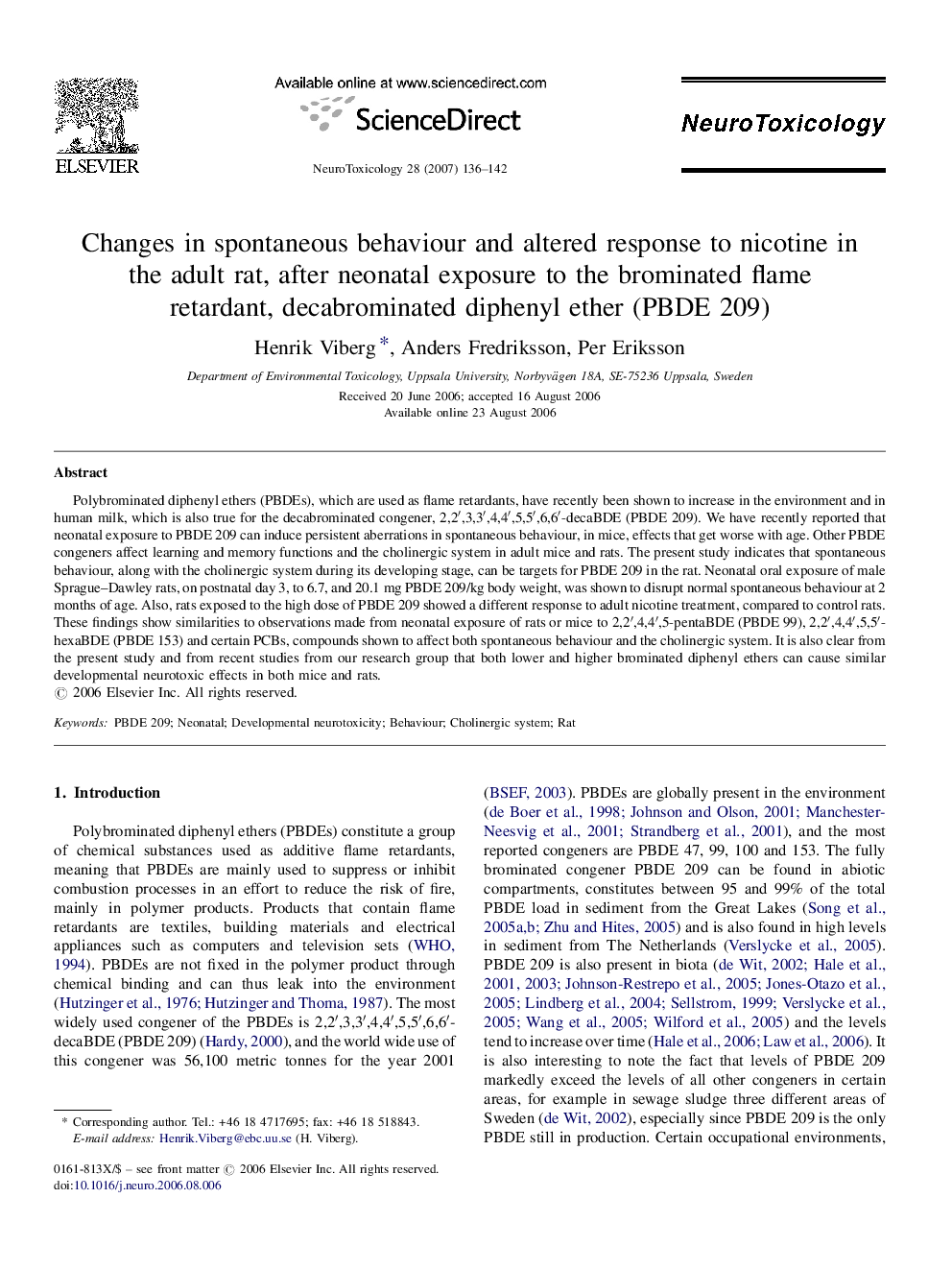| Article ID | Journal | Published Year | Pages | File Type |
|---|---|---|---|---|
| 2590503 | NeuroToxicology | 2007 | 7 Pages |
Polybrominated diphenyl ethers (PBDEs), which are used as flame retardants, have recently been shown to increase in the environment and in human milk, which is also true for the decabrominated congener, 2,2′,3,3′,4,4′,5,5′,6,6′-decaBDE (PBDE 209). We have recently reported that neonatal exposure to PBDE 209 can induce persistent aberrations in spontaneous behaviour, in mice, effects that get worse with age. Other PBDE congeners affect learning and memory functions and the cholinergic system in adult mice and rats. The present study indicates that spontaneous behaviour, along with the cholinergic system during its developing stage, can be targets for PBDE 209 in the rat. Neonatal oral exposure of male Sprague–Dawley rats, on postnatal day 3, to 6.7, and 20.1 mg PBDE 209/kg body weight, was shown to disrupt normal spontaneous behaviour at 2 months of age. Also, rats exposed to the high dose of PBDE 209 showed a different response to adult nicotine treatment, compared to control rats. These findings show similarities to observations made from neonatal exposure of rats or mice to 2,2′,4,4′,5-pentaBDE (PBDE 99), 2,2′,4,4′,5,5′-hexaBDE (PBDE 153) and certain PCBs, compounds shown to affect both spontaneous behaviour and the cholinergic system. It is also clear from the present study and from recent studies from our research group that both lower and higher brominated diphenyl ethers can cause similar developmental neurotoxic effects in both mice and rats.
